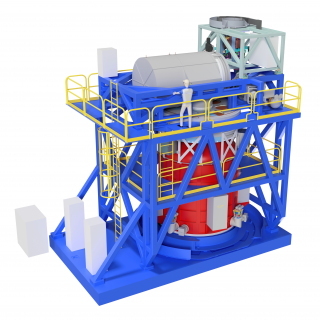|
The European Southern Observatory (ESO) is building a segmented and adaptive telescope with a 39-metre primary mirror, the Extremely Large Telescope (ELT). It will significantly improve our knowledge in most branches of Astrophysics and, therefore, it is widely supported by the scientific community. The ELT programme represents a major opportunity for Spanish hi-tech industry in a broad range of technology and engineering subjects, not only for the telescope itself but also its instruments. The High Angular Resolution Monolithic Optical and Near-infrared Integral field spectrograph (HARMONI) is a first light instrument for the ELT, therefore available as soon as the telescope will be in operations. The University of Oxford lead the international consortium developing HARMONI conformed also by UKATC-Edinburgh, Durham University, CRAL-Lyon, LAM, IAC-Tenerife, CAB/CSIC-Madrid, and University of Michigan.The overall objectives of this proposal is to support the Instituto de Astrofísica de Canarias (IAC) participation in the development of HARMONI during Phase-D1, corresponding to the manufacturing, assembly, integration and test stages at subsystem level, as well as to fund the scientific preparation for HARMONI. The IAC actively participated in all the phases of the HARMONI development, from the initial proposal (in 2007) to the Preliminary (2015-2017, Phase-B) and Final (2017-2020, Phase-C) design phases. The IAC participation in HARMONI includes three large blocks: (1) development of the pre-optics subsystem, which will be inside a cryostat working at cryogenic temperatures, (2) development of the control electronics for the entire instrument, including the LTAO system, and coordination in the architecture and, (3) definition and development of scientific cases for the use of HARMONI. This implies research using current instrumentation on the balance between secular and external phenomena affecting the evolution of galaxies. It also entails exploring through simulations the capabilities of HARMONI for key science cases. The Spanish contribution in HARMONI will allow the access to the ELT as soon as it is operative via the guaranteed time, representing a unique scientific opportunity for the Spanish astronomical community. Moreover, the development of HARMONI represents a major technological endeavour in which the national industry have the opportunity to contribute, especially during Phase-D1 where designs transform into functional mechanisms. The IAC is doing a notable effort to maintain its participation in HARMONI during the last phases (B and C), which currently represents about 12.87% of the manpower to develop HARMONI (~78 full-time equivalent, FTEs). Besides, the centre is also updating the infrastructures for the integration and verification of large cryogenic instrumentation, as the HARMONI preoptics. Phase-D1 is a critical stage (in terms of technical tasks) that requires an important injection of manpower to grant the completion of the work packages under IAC responsibility on time.This will be essential to maintain the IAC participation and maximize the opportunity for scientific return. For all the reasons exposed, this project proposal applies for a significant number of new contracts. |


